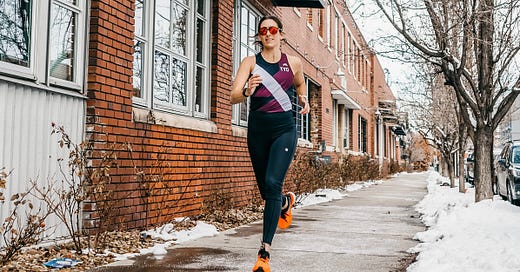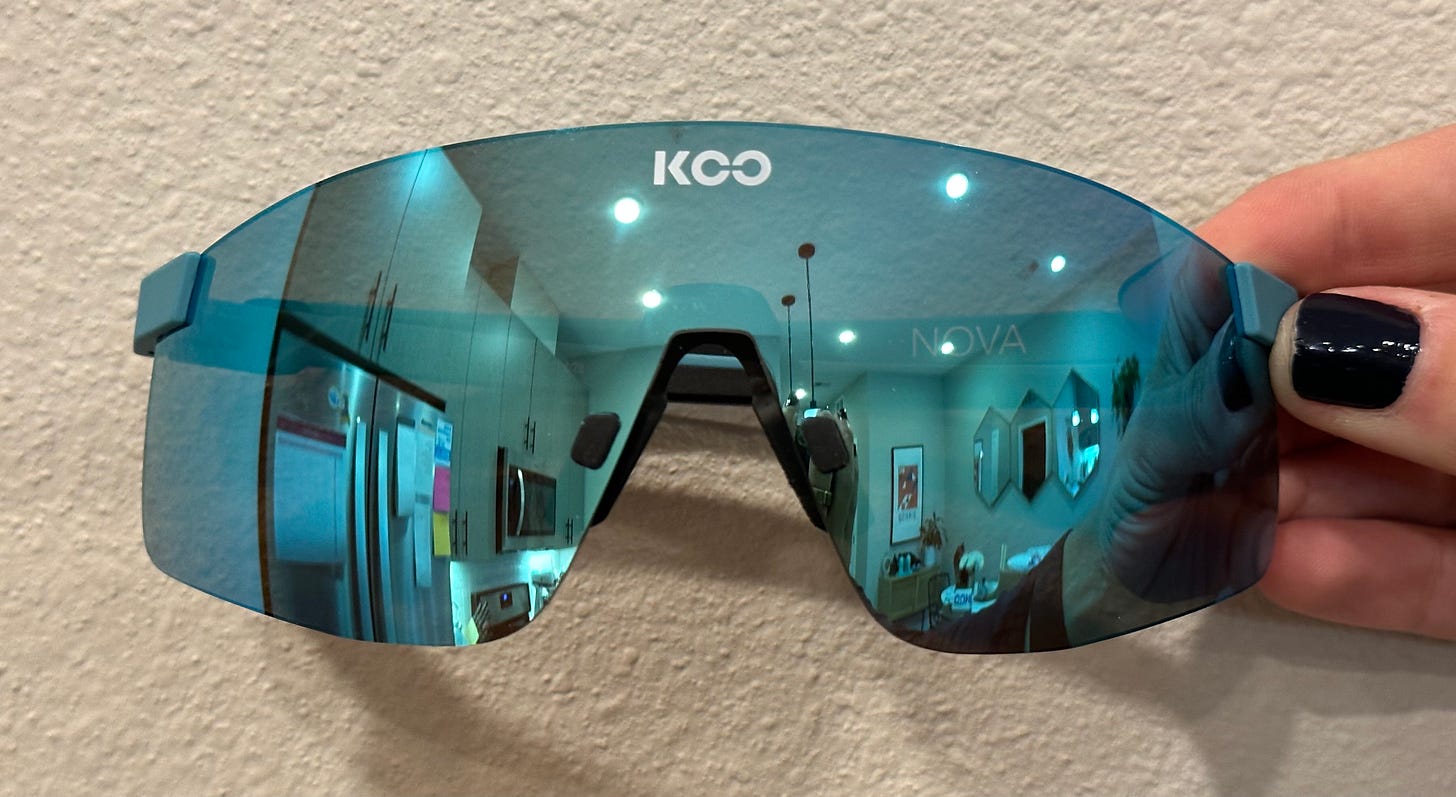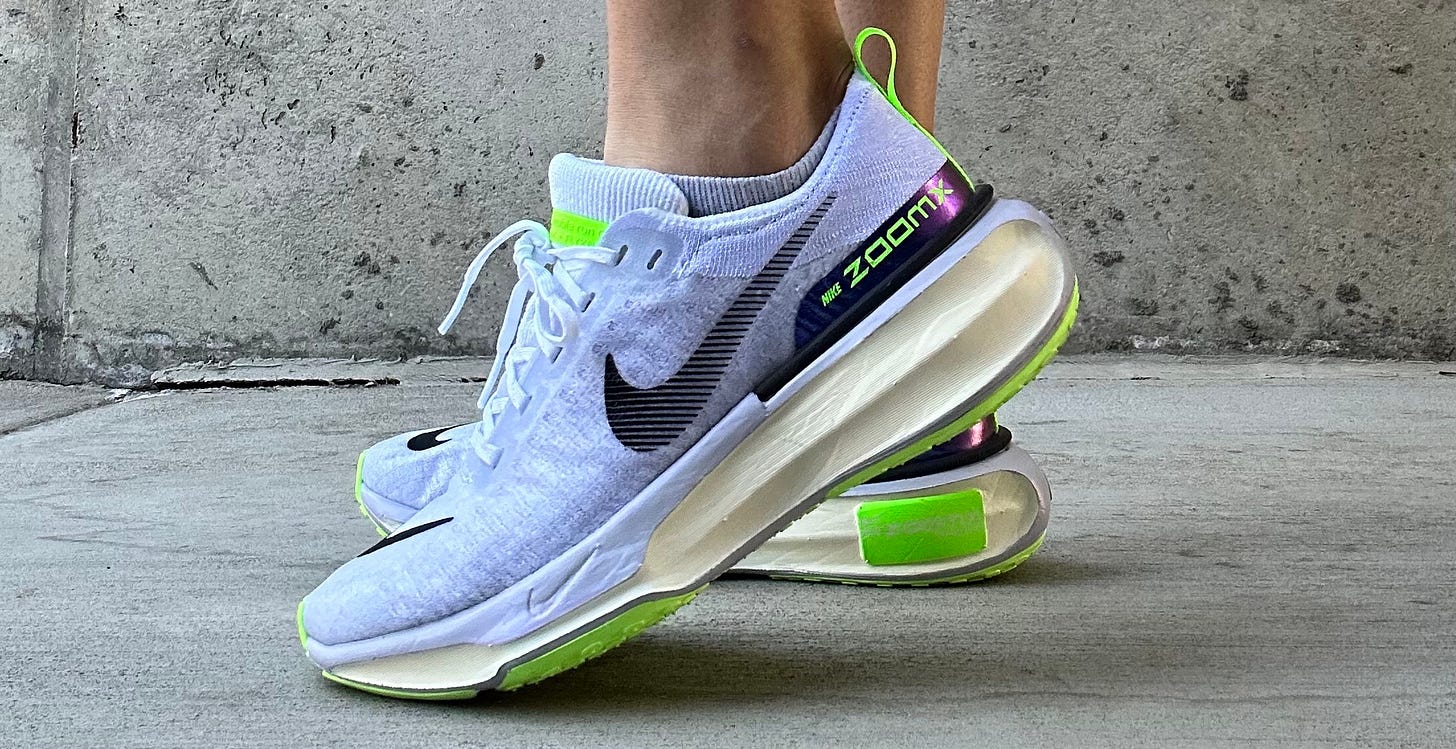3 Common Marathon Fueling Mistakes (And How to Fix Them)
Dial in your running nutrition so you can race at your peak.
There are less than three weeks until the Tokyo Marathon and, for me, this is the time where I’m less focused on training and more focused on not eating like a college freshman, which is, unfortunately, still my default diet. I’ve spent the better part of the last few years trying to figure out how to fuel in a way that requires the least amount of lifestyle adjustments while allowing me not to feel like trash on a race course (I’ve tried, I swear, but I’m just not giving up my post-run sodas or eating pizza multiple times per week).
I did hire a nutritionist before the Chicago Marathon 2021 and was embarrassed to send her my three-day food diary—but then felt gratified when she told me my nutrition choices weren’t necessarily bad, I just needed to eat more. Since then, I’ve kept the sample meal plan she devised for me on my fridge to take some of the guesswork out of fueling multiple times per day, especially leading into a race.
At this point, I’ve accepted that nutrition is not my strong suit and I worry more about getting enough calories rather than the quality of those calories as my training ramps up. But the last few weeks before a race are when I pay special attention to how much and what I’m eating—when I’m running and when I’m not—because I’ve experienced firsthand how badly not doing so can affect my marathon performance.
To that end, I polled some of the best endurance dietitians I follow for nutrition advice on the biggest mistakes runners make when it comes to fueling for the marathon—and what to do instead.
1. You’re not carb-loading properly.
I never thought I had a problem consuming enough carbs, but last fall when I tracked my macros pre-marathon to hit the 500 grams Meghann Featherstun’s Carb Loading Guide recommended, I realized just how much more I needed to eat. After following that plan, I felt so much better during Berlin and NYC! (Although I did still crave a soda by the final 10K of both marathons; bless the spectators handing out Coke on course.)
Carb loading is a crucial part of your pre-marathon routine, but you have to do it right. “Most commonly I see people scale up everything and then wonder why they feel miserable,” says Meghann Featherstun, R.D., a board-certified specialist in sports dietetics. “A lot of commonly thought of 'carbs' are actually 50 percent fat and 50 percent carbs, like cookies, donuts, and french fries. We want to scale up the carbs—pasta, bagels, bread, rice, bananas, etc.—and keep fat on the lower side.
So what does that look like? It starts with keeping your nutrition similar to what it would be if you were running a higher mileage week, even as you’re tapering. Then, you increase your carbs strategically two days out, culminating in that big pasta dinner the night before the race, says Featherstun. (P.S. Don’t try to deplete your carb stores before a carb load, because “this leaves people irritable, more susceptible to catching a cold, and it’s outdated research,” says Featherstun. If you struggle with fitting extra carbs into your diet, like I did, try liquid options like Skratch Super High Carb or Maurten 320.
2. You’re not considering electrolytes and fluids to meet hydration needs.
I made this rookie mistake at the Colorado Marathon in 2022. It was so cool at the start and the steep downhill made things feel easier, so I didn’t take in water for the first 10 miles of the race then bonked aggressively at mile 17 and got sick at mile 22.
“Being underhydrated—especially in the sodium department—is one of the top causes I see of GI issues,” says Holley Samuel, a registered dietitian, certified personal trainer, and running coach. “People will think it’s the gels when it’s not the gels, it’s that they’re dehydrated so nothing is able to be absorbed properly in the gut, thus causing that GI distress and sloshiness.”
Water and electrolytes go hand-in-hand because electrolytes draw water into your working muscles, helping your body retain fluid as you sweat. But needs vary drastically from runner to runner, so yours will depend on your individual sweat rate and sweat composition (I recently tried the Nix Hydration Sensor, which calculates these numbers for you.) But “it’s important to get at least 300 milligrams of sodium per hour on top of fluids,” says Samuel. Make sure you practice your hydration (water and electrolytes) during your long runs so you’re ready for race day
3. You’re not seriously practicing a full fueling plan pre-race.
Proper fueling can prevent so many race day nightmares, like bonking, stomach issues, and fatigue. But you need a real plan, not a haphazard approach like “I'll take whatever gels are on the course” or “I don't always use hydration and electrolytes.” Dietitian Kylee Van Horn recommends mapping out your plan and testing it to a T so there will be no surprises during the marathon.
So much of fueling is dependent on timing, so “try to nail your fluids, electrolytes, and calorie targets durin long runs,” says Van Horn. “Even trialing gels and fluids in higher intensity workout sessions can help ensure that what you are trying to use on race day will work for your stomach.” Pay attention to how your body reacts in those scenarios: If your stomach is sloshing or cramping, if you constantly pull over and use the bathroom, or if your legs feel heavy and like your muscles aren’t firing, those are all red flags that something’s off.
Play around with how much you're drinking, which electrolytes you're using (a sweat test can help you dial in your needs), your choice of sugars (avoid having too much fructose or glucose, she says), gels versus chews, and how you’re fueling pre-run.
the rundown
Koo Nova Sunglasses
Technically, these are trail running sunglasses, but I don’t discriminate by marketing labels when it comes to shades. The Nova’s rimless shield design is 100% my go-to style, and gave me major Oakley EVZero vibes. I loved how lightweight they were (21 grams!) and the clarity of the Zeiss lens was excellent on a bright sunny day, but I’ll have to test them in a trail scenario to see how they handle more variable light. Otherwise, they don’t bounce at all on the run—I barely noticed them—but my one pain point was that the tips pulled at my hair when I took them off (FWIW, I’ve wrapped athletic tape around the ends of other sunglasses to get around this).
“Let Your Mind Run” by Deena Kastor
I’m very late to this book (it came out in 2018), but I find it super helpful to read about the mental side of running leading up to a marathon, and this really delivered. The underlying theme of Kastor’s memoir is the idea that positive thinking and positive self-talk takes practice and repetition. If repetition of speed builds powers and repetition of distance builds endurance, she says, then repetition of positive thinking builds mental toughness. I found the examples she used of how she’d shift her thinking in real-time—whether during training sessions or the Olympic marathon— most helpful, and what stuck with me was her commitment to avoiding negativity by “find a thought that serves you better.” I’ll be taking that approach to Tokyo for sure.
Nike Invincible 3
There’s been a lot of hype around the Invincible 3 and I’m jumping on the bandwagon after my initial test run. I remember the first version being clunkier, but Nike really smoothed things out. This one is packed with around 40 millimeters of ZoomX foam, with the higher stack height stabilized by a wider forefoot. That ZoomX foam—which you’ll also find in the Vaporfly—is super lightweight and responsive, which I could really feel on an easy run with tired legs (these aren’t designed for speed, though; it’s more about comfort). The other big thing I noticed: extra heel support. I actually raced a downhill half marathon in the first generation because I loved the chunky heel; this one has a smaller, more precisely located heel clip and feels even more solid.
Changing Your Gait Can Reduce Knee Pain
Patellofemoral pain syndrome (AKA runner’s knee) is one of the most common running injuries, a 2020 analysis in the Journal of Clinical Medicine found. But tweaking your gait juuust a bit—by increasing your cadence, adopting a forefoot strike pattern, and/or running softer—can lead to “immediate” reductions in pain, according to a 2023 study in Frontiers in Sports and Active Living. The key is reducing the forces on the patellofemoral joint.









the first time I met Deena Kastor, I told her I was a big fan and that I felt like I knew her already because I had listened to the audio version of her book. and she was like, "well that's awkward."
I've since been able to work with Deena on a couple of occasions and she has been one of the kindest and most thoughtful people I've met in the running industry